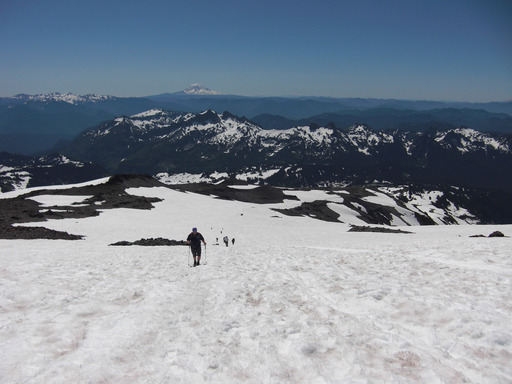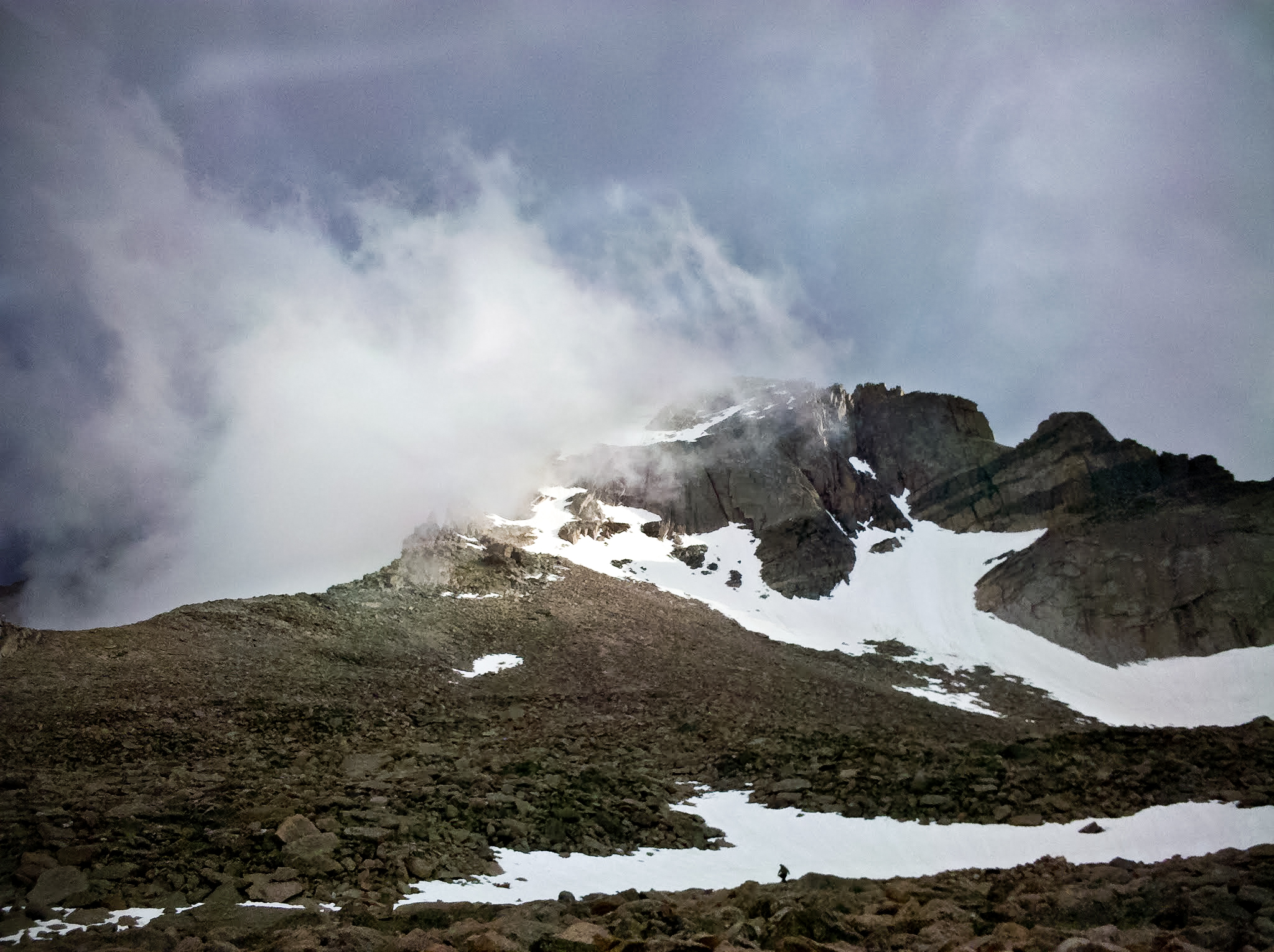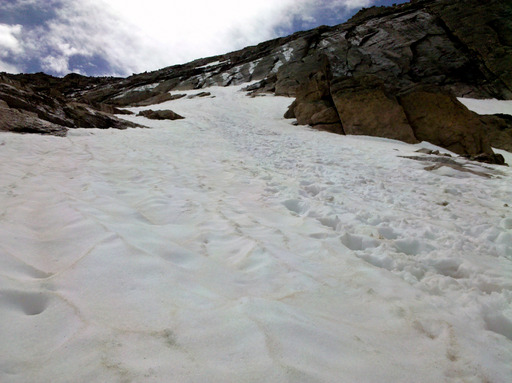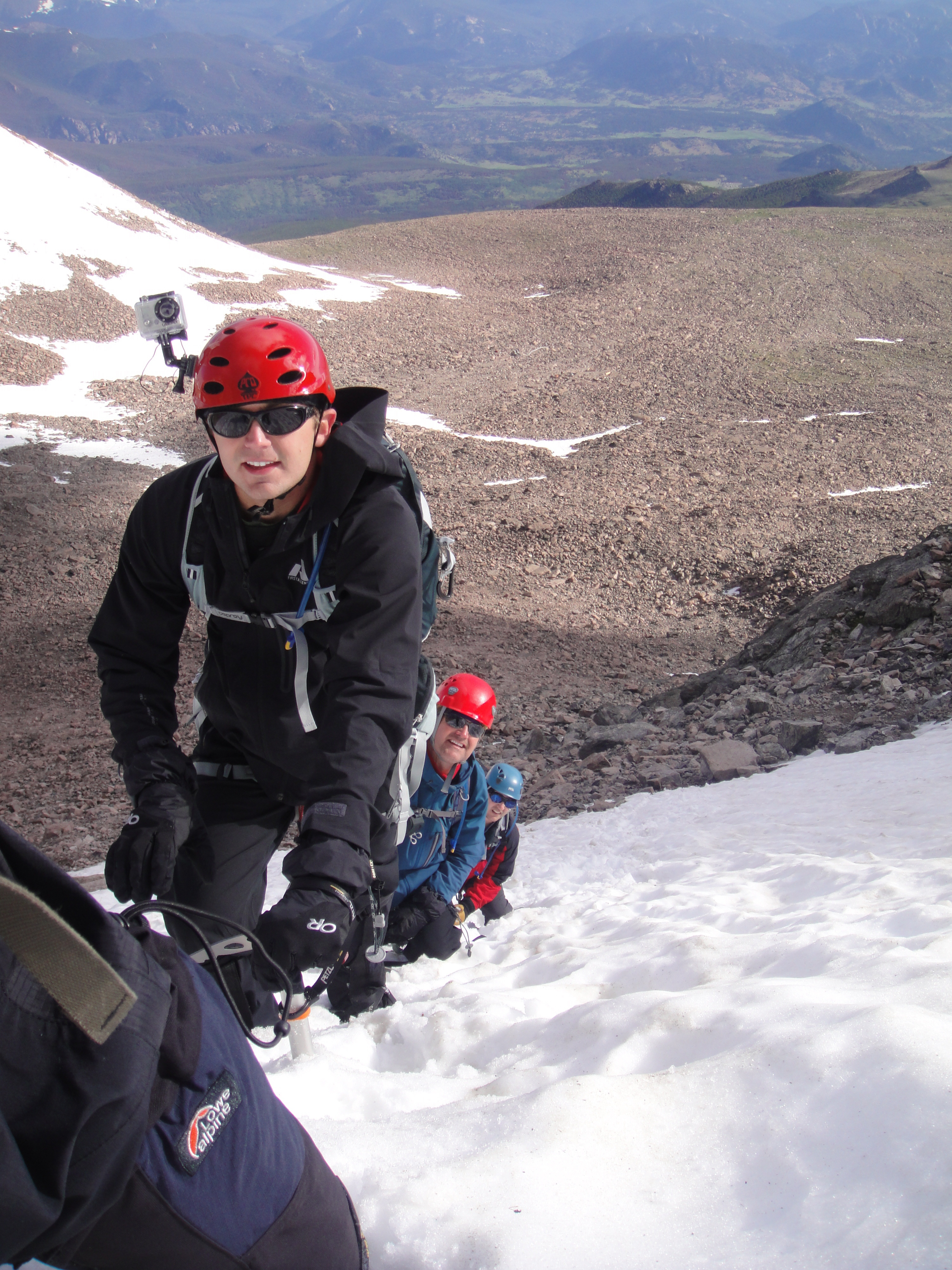Trip Report: Mt. Rainier, WA
 Friday, August 26, 2011 at 10:05PM
Friday, August 26, 2011 at 10:05PM "You need to be in the best shape of your life."
For month's RMI's fitness warning haunted me. I knew I wasn't in the "best shape of my life," not out of shape, but no where near my shape in 2009 (when I training for the bike racing season). Based on that, and my performance on Long's Peak, I figured I had about a 60% chance of summiting.
Team Varmit - the Long's Peak team - arrived a couple days early to sneak in a few acclimatization hikes before joining the rest of the team. We asked around for hike recommendations - the most obvious (which we hadn't considered) came from Paradise's Climbing Permit Ranger who suggested hiking to Camp Muir. What better way to prepare than to hike what you are going to have to hike?
We, as a group, were a little apprehensive about tackling such a large prospect on our first day in the park. We talked ourselves into doing a lesser hike, to Panorama Point, and continuing onto Muir if we felt strong.
On the mountain that plan was quickly discarded. We set a fast pace, easily out pacing the RMI teams on the mountain, and blitzed past the Panorama Point turnoff. In no time we found ourselves on the Muir snowfield.
Throughout the hike to Camp Muir (we would turn back about an hour away from the camp), I felt good. I was never out of contact with the lead hiker, oftentimes setting the pace myself, and I never felt winded, a complete turn-around from Long's Peak. My 60% estimate was beginning to seem overly conservative.
We had signed up for RMI's five day Mt. Rainier summit program. The first day serves as a gear check, the lead guide verifies you have the necessary equipment to survive the mountain (if not rental gear is available). The second day is a skills school, where the team is taught the skills necessary to survive the mountain. The third through fifth days are the climb/descent days.
Our group's lead guide, JJ Justman had (at this point) climbed six of the fourteen 8000 meter peaks, including K2 and three trips to Everest, and summited Mt. Rainier 183 times.
The other members of our team were nearly as impressive. Two had just returned from Kilimanjaro. Two were from Colorado and had hiked many of the 14ers. I was definitely on the lower end of experience with these folks.
During the skills day, it was readily apparent that this was a team that came prepared to summit. Everyone quickly grasped the skill being taught, from the rest step to team arrest. At the end of the day, the guides were happy to report we all easily passed the skills portion.
All that was left was the climb.
I don't recall much about the march to Camp Muir. Our team rather quickly established a rhythm and the miles just evaporated away. I recall noticing that this ascent to Muir was easier and required much less energy than Team Varmit's acclimation hike (nearly) to Muir. A testament to efficient (American-style) hiking.
When we reached camp, JJ broke the news. 60+ MPH winds were predicted for our scheduled summit day. If they materialized, we would have to forgo the summit. If we felt strong, and were willing to lose our "rest/acclimatization" day, he was more than willing to attempt the summit a day early. No one said anything. Two members inadvertently said, "Yes!" before catching themselves - no one wanted to push "weaker" climbers. JJ gave us until 5pm to voice reservations in private.
By 5pm, the decision was made: We would attempt to summit a day early. Furthermore, the rope teams were also set. I would be on the second rope team, in the third position (the team of 12 was broken into three teams of four - a guide followed by three clients).
I didn't know what to think about my position assignment - I felt good, but interpreted the position as a sign the guides saw weakness. (The events of the next day would prove this to be an incorrect interpretation).
By 6pm, the entire team were in their tents trying to sleep before our 11/12ish wakeup call.
At 11:45pm, JJ woke up the team - after a quick breakfast, we started our ascent.
The first hour of hiking is a blur - I remember feeling tired and altering my step to increase my Rest Steps, but no definitive moment stands out. At our first break, I discovered my dietary plans for the day were not going to work - I couldn't stomach the sandwiches I brought. Not good - given I had restricted my food to the bare minimum, there was very little margin of error. Not eating one portion of my allotment, had unfortunate (potential) consequences.
My dietary anxiety was cut short by one of the guides - he needed to remove one of his rope team - and that was me. Self doubt raged inside me - "What weakness do they see that I don't?"
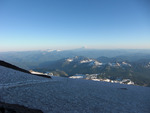 The doubt vanished when I was paced as the lead rope team's anchor. The lives of two people were now in my hands. The lead rope team sets the pace and finds the route - if there are hidden dangers, we will find them first. The anchor position is a rope team's last hope - if everything else fails, and the team starts to fall, the anchor MUST stop the fall.
The doubt vanished when I was paced as the lead rope team's anchor. The lives of two people were now in my hands. The lead rope team sets the pace and finds the route - if there are hidden dangers, we will find them first. The anchor position is a rope team's last hope - if everything else fails, and the team starts to fall, the anchor MUST stop the fall.

With my new responsibilities we headed out. As we reached Disappointment Cleaver, we paused and two of our group turned back. Neither seemed pleased about it, but both knew they were not 100% and turned around willingly.
The rest of the climb to the summit was without incident - not easy, but not incredibly difficult. Pressure Breathing and efficient stepping proved incredible - I felt more rested at the top of Rainier than I had on 7k Alpine passes!
Without the adrenal push of the summit to encourage you, the descent becomes a slog. The snow is much softer and slipping is a very real (and often indulged in) danger. Any relaxation of focus, to admire the view for example, results in a slip or stumble.
But our group did well. Well enough that we often paused to perform trail maintenance - fixing a ladder, flagging crevasses, and closing routes. 14 hours after we started, we arrived back at Camp Muir. A day later we would return to the trail head and then back to our lives.

